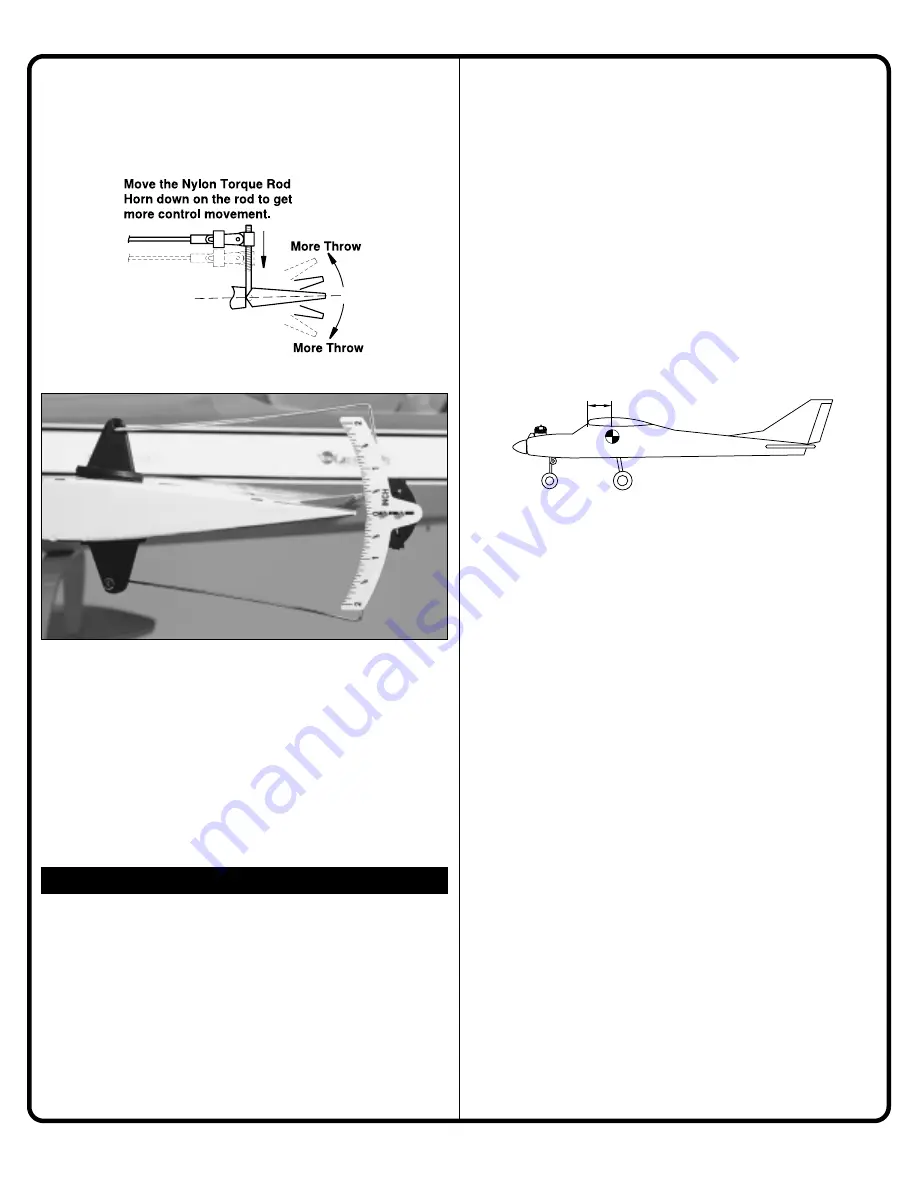
17
If you need more control movement, you can move the nylon
horn closer to the control surface or you can move the rod at
the servo away from the center of the servo horn. If you have
too much movement, reverse the process.
One leading cause of crashes is flying an airplane with its
control throws set differently from those recommended in the
instructions. The Great Planes AccuThrow
™
lets you quickly
and easily measure actual throws first, so you can make
necessary corrections before you fly. Large, no-slip rubber feet
provide a firm grip on covered surfaces without denting or
marring the finish. Spring tension holds AccuThrow’s plastic
ruler steady by each control surface. Curved to match control
motions, the ruler provides exact readings in both standard or
metric measurements.
GPMR2405.
CHECK THE LATERAL BALANCE
Now that you have the model completed, this is a good time to
balance the airplane laterally (side-to-side). Here is how to
do it:
❏
1. Attach the wing to the fuselage.
❏
2. With the airplane sitting level, lift the model by the engine
propeller shaft and the bottom of the fuselage at the tail (this
may require two people). Do this several times.
❏
3. If one wing always drops when you lift the model, it
means that side is heavy. Balance the airplane by attaching
weight to the lighter wing tip.
Note:
An airplane that has been
laterally balanced will track better in loops and other
maneuvers. Balancing weight is available from your local
hobby dealer.
CHECK THE FORE-AFT BALANCE (CENTER OF GRAVITY)
Note:
This section is
VERY
important and must
NOT
be
omitted! A model that is not properly balanced will be unstable
and possibly unflyable.
❏
1. Accurately mark the balance point on the bottom of the
wing on both sides of the fuselage. The balance point is
located 3-3/8” (85mm) back from the leading edge. This is the
balance point at which your model should balance for your first
flights. Later, you may wish to experiment by shifting the
balance up to 1/4" (6mm) forward or back to change the flying
characteristics. Moving the balance forward may improve the
smoothness and arrow-like tracking, but it may then require
more speed for takeoff and make it more difficult to slow down
for landing. Moving the balance aft makes the model more
agile with a lighter and snappier “feel”. In any case, please
start at the location we recommend and do not at any time
balance your model outside the recommended range.
❏
2. With the wing attached to the fuselage, all parts of the
model installed (ready to fly), and an
empty
fuel tank, position
your fingertips at the marked balance point.
❏
3. Lift the model. If the tail drops when you lift, the model is
“tail heavy” and you must add weight* to the nose. If the nose
drops, it is “nose heavy” and you must add weight* to the tail
to balance.
Note:
Nose weight may be easily installed by using a Heavy
Spinner Hub or gluing lead weights to the firewall. Tail weight
may be added by using Great Planes (GPMQ4485) “stick-on”
lead weights.
*If possible, first attempt to balance the model by changing the
position of the receiver battery and receiver. If you are unable
to obtain good balance by doing so, then it will be necessary
to add lead weights to the nose or tail to achieve the proper
balance point.
CG
3-3/8"
(85mm)
BALANCE YOUR MODEL
IMPORTANT!








































